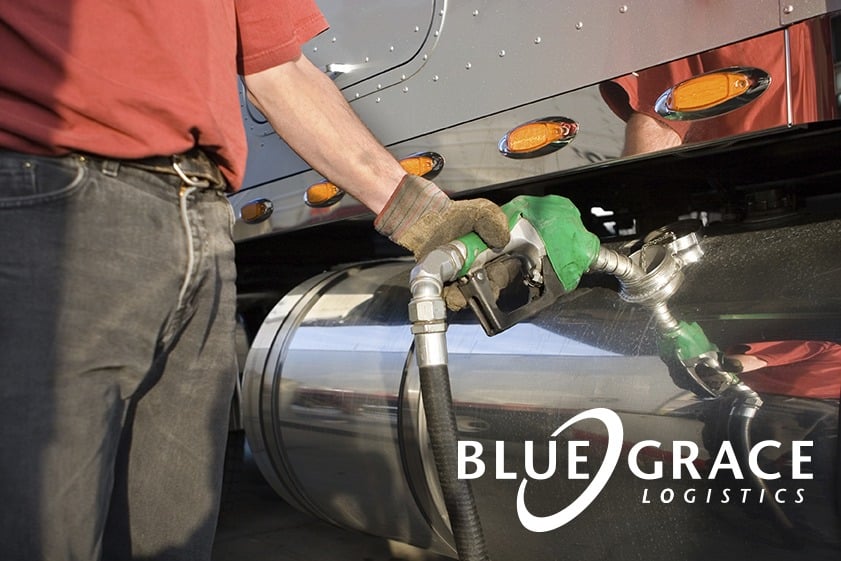
Trucking Industry Feels Pressure from the EPA
With mounting pressure from the EPA for the trucking industry to make a change to their carbon dioxide emissions, one would think that they would be ready to make the shift away from fossil fuels, specifically diesel. Fossil fuels are not only notoriously expensive but also produce a horrendous amount of carbon dioxide which in turn gets released into the atmosphere. However, even with the mandates on the horizon, many asset-based trucking companies are hesitant to replace an entire fleet. Doing so, could be enough to nearly bankrupt smaller carriers or at least cause a substantial financial hit.
Fossil fuels are not only notoriously expensive but also produce a horrendous amount of carbon dioxide which in turn gets released into the atmosphere.
In a study conducted by the American Transportation Research Institute and the University of Michigan, over 100 fleet managers that responded to the survey said they’ll look for better efficiency in driving and training before they would consider turning to fossil fuels. The question is, if truckers are unwilling to switch to alternative fuels then what can be done to improve fuel economy while cutting back on carbon emissions. The answer? Quite a lot actually.
Improving Fuel Efficiency over Fuel Type
There’s no getting around the fact that trucks are necessary as they carry upwards of 70% of all goods across our country. With that said, fuel is perhaps one of the biggest costs for the transportation industry, and in many cases takes up approximately 24% of the operating expenses with the average mile per gallon a mere 6.5. So if these companies aren’t willing to move over to alternative fuels, then improving fuel economy will have to be the solution. Here are just a few of the solutions that have been found to increase fuel efficiency.
Fuel is perhaps one of the biggest costs for the transportation industry, and in many cases takes up approximately 24% of the operating expenses.
Aluminum Frames- This covers everything from wheels to truck frames themselves, but when you cut down on the weight, the truck itself will inevitably use less fuel. While the frames have been made out of aluminum for some decades now, some trucking companies, about 9 in 10, are also shifting over to aluminum wheel which also helps to cut down on the weight without sacrificing too much of the necessary tensile strength.
Automatic Monitoring- With the new found power of computer processing, truckers are getting a good bit of a technological overhaul. This runs the gamut of speed limiters which cut down on excessive fuel consumption to automatic tire pressure monitoring and inflation. Under inflated tires cut down on fuel efficiency, so having a system that automatically inflates the tires when they get too low on pressure can be a quick and rather uninvasive means of improving efficiency. As it stands, approximately 82% of trucking companies use speed limiters, 60% use tire pressure monitors, and 50% use automatic inflation systems.
As it stands, approximately 82% of trucking companies use speed limiters, 60% use tire pressure monitors, and 50% use automatic inflation systems.
Eco-Driving Training- Another method of fuel economy that is being employed is to train driver’s in Eco-Driving. Eco-driving is a school of thought that employs a variety of driving techniques such as gradual acceleration and braking as well as the optimal time to shift gears. Not only does this cut down on some of the wear and tear that occurs from everyday use but also serves to boost fuel efficiency. Eco-drive training is one of the slower systems to grow, with only about 50% utilization, but it also has one of the biggest potentials for growth. About 25% of trucking companies interviewed are considering implementing training within the next one to two years.
Eco-drive training is one of the slower systems to grow, with only about 50% utilization
These are only some of the methods that can be employed without the need to completely overhaul a fleet. There are still more options which help to cut down on wind resistance and allow the truck to move smoothly without so much need for acceleration.
Size Matters
Ultimately one of the biggest hang ups for fuel efficiency, comes down to the size of the company. Larger fleets will have an easier time phasing out older trucks and bringing in new trucks with hybrid or electric systems. However, the majority of the trucking industry is made up of small to mid-size companies, where such replacements aren’t always viable.
Larger fleets will have an easier time phasing out older trucks and bringing in new trucks with hybrid or electric systems.
Using alternative methods to boost fuel economy is essential to success. Not only with the EPA’s phase two fuel efficiency and emission stands that went into effect in August, but with the cost of fuel beginning to creep up again, truckers will have little other option in the future other than to striving towards improvement.
As it stands, the most effective means of boosting fuel efficiency, at least in the terms of a return on investment (as reported by companies surveyed) are, Aerodynamic treatments, such as skirts and wheel covers; Idle reduction Technology (IRT); and Automatic Transmissions all coming in at the top three. However, every improvement made will add to efficiency and cost reduction in the long haul.



